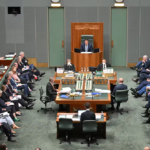Unbottling the drivers of family violence

The relationship between alcohol and family violence is complex and multi-layered. While violence in pubs and streets is highly visible, the most significant number of alcohol-fuelled assaults happens behind closed doors, hidden, unseen.
About a third of family and domestic violence related to alcohol use is not reported.
A retrospective study of police offence data from 2009 to 2013 found that Victorian police attended 233,672 family and domestic violence incidents during this period and that alcohol use was present in 44.2 per cent of these incidents.
A fifth (22.6 per cent) of all family and domestic violence offenders were found having definitely used alcohol, and 16.1 percent as having possibly used alcohol. Perpetrators were more likely to be male both for intimate partner violence and family violence (violence between family members other than intimate partners) at 82 per cent and 69 per cent respectively.
Confronting as they are, these statistics do not reflect the full scale of the problem; they represent only those assaults that were grievous enough to have been reported to the police.
“About a third is not reported,” says Ingrid Wilson, Research Fellow at the La Trobe University Judith Lumley Centre and Coordinator of the Violence Against Women Research Network. “What this represents is the tip of the iceberg.”
A study by Deakin University led by Professor of Psychology, Peter Miller, put the proportion of unreported incidents higher, at 60 per cent.
In its 2015 report on alcohol’s impact on families and children, the Foundation for Alcohol Research and Education (FARE) says it is estimated that alcohol contributes to 73 per cent of partner physical assaults.
A study by the Crime Statistics Agency noted that perpetrators using alcohol were more likely to have access to firearms, to have choked a victim, used controlling behaviours, or to threaten to harm or kill children, other family members or pets.
While these sorts of behaviours are also present where alcohol is not involved, they are exacerbated by drinking. “There is more heightened risk and more severe outcomes,” says Wilson. “Alcohol increases the volatility and victims are more severely injured.”

Alcohol – Cause or excuse?
The causal intersection between alcohol and domestic violence is contested.In its submission to the Victorian Government’s review of the Liquor Control Reform Act, Our Watch supported initiatives aimed at reducing harmful alcohol use but opposed any simplistic suggestion that alcohol ‘causes’ violence against women, observing that “such a position can inadvertently excuse such violence, which only further adds to a culture which regularly excuses, trivialises or condones violence against women.”
The alcohol and the family violence prevention sectors are collaborating more regularly on these issues. VicHealth’s submission to the same review noted that factors associated with gender inequality are the most consistent predictors of violence against women; however a range of reinforcing factors including alcohol can interact to increase the probability, frequency or severity of such violence.
VicHealth highlighted the role of packaged liquor and its contribution to health and social harms in Victoria – specifically family violence – and the need to better regulate the availability of alcohol through packaged liquor outlets.
Irene Verins, Manager, Mental Wellbeing at VicHealth, says that in recent years it has been recognised that the idea of alcohol as a ‘major contributing factor’ needs to be addressed “alongside some of the fundamental work around decreasing inequality between men and women. You also need to have specific work around alcohol and its availability and price, and the culture around alcohol.”
Verins notes that the parties involved in these discussions – notably the alcohol and the family violence prevention sectors – are collaborating more regularly on these issues. VicHealth has facilitated these conversations through roundtable discussions, symposia and policy forums.
The Judith Lumley Centre also made a submission to the Victorian Government’s review of the liquor control legislation and, like Our Watch, cautioned that that there is ‘no single explanation for the occurrence of alcohol-related violence’. The submission pointed to ‘multiple contributing factors’ including the effects of alcohol on thinking and behaviour and the circumstances, character and attitudes of the individuals involved.
Camille Gierck, Communications Officer at No to Violence incorporating the Men’s Referral Service, says, “If there were already pre-existing factors and violence at play and you added alcohol on top of that, then there would be a perfect storm of conditions. Alcohol changes people’s cognitive awareness and impulse control in a society that is underpinned by a whole lot of patriarchal views. Alcohol is so accessible as well. People can use it as a coping mechanism when they are feeling horribly down or stressed.”
A holistic approach
Gierck believes there needs to be greater integration of support services to ‘stop people falling through the cracks’.“Out of the Royal Commission into Family Violence there were a lot of recommendations about moving away from a silo approach. To prevent family violence or mental health issues they need to start examining what else is going on.“
There needs to be greater integration with mental health, alcohol and other drugs, family violence, disability so that we are giving the full suite of interventions rather than just one.
“With family violence, there is a high chance there could be alcohol and drug issues and also mental health and childhood trauma. In the event of a family where there is a substance-abuse issue then there would need to be other kinds of therapeutic interventions to ensure the women and children are safe as well.”
Alcohol changes cognitive awareness and impulse control in a society that is underpinned by a whole lot of patriarchal views.
Witnessing family violence is now defined as a form of child abuse and neglect. FARE’s 2015 report into the impact of alcohol on children and families indicates that alcohol is involved in a large proportion of child protection cases: 33 percent of substantiated child abuse and neglect cases and 42 per cent of cases involving a court protective order in 2001–2005.
The damage done by family violence and alcohol in childhood can be profound, lifelong and generational.
Miller believes that “trauma is the important predictor of whether somebody is violent. If you grow up in a violent household and experience violence then that is a major predictor of experiencing violence into the future. Trauma, alcohol and violence are inextricably interwoven. Kids who grow up with violence are much more sensitive to it, they see aggression where there is none and they react much, much faster. Their brain structures are different.”
The case for cultural change
Cultural norms that reinforce attitudes of disrespect and violence towards women continue to be a contributing factor, according to Verins. “At VicHealth, we are interested in how you encourage young boys to have a healthier form of masculinity,” she says.The 2016 Deakin University study led by Miller stated that ‘cultural norms are supported through a vast array of commercial and cultural messages which glamorise alcohol’.

The routine celebration of masculinity through drinking in advertisements and programming makes it difficult for anyone trying to temper the message.
“Drinking to excess is seen as being a celebrated part of being male,” says Wilson. “We need to be challenging how drinking is a very masculine activity. The women dealing with this are seen as nagging wives trying to stop men from having fun. Women have to carry the burden of violence as well as manage someone else who has problematic alcohol abuse.”
Wilson believes the 18- to 25-year age group should be targeted in advertising campaigns because this is where there are the highest rates of risky alcohol consumption. “We need to be getting to them young,” she says.
In its submission to the review of liquor control legislation, La Trobe University asserted that the Commission has the power to ban inappropriate advertising, and that ‘it must not condone or encourage rapid or excessive drinking. The advertising of liquor must not imply sexual success.’Miller is conscious of the impact of non-traditional media. “Online advertising is much more insidious. It is data driven and very much targeted and there are no government regulations.”
Bringing it back to the bottle-o
Miller is also intensely aware of the dynamics in the lower socioeconomic areas which he believes are targeted by big bottle shops and supermarkets. “People have far fewer resources and educational skills, and lower levels of communication. There can be a sense of hopelessness, mental health problems and developmental problems. If they are constantly under threat, people will act more violently.”
But the issue of family violence is not restricted to lower socioeconomic areas. A 2015 newspaper report on a Safer Pathways pilot site run by the Women’s Domestic Violence Advocacy Service in Sydney’s exclusive eastern suburbs revealed that 1,205 women were referred by police to the Safer Pathways program over a six-month trial period, and of the eight women impacted on average every day, two were at immediate risk of being killed.

A 2011 longitudinal study by Dr Michael Livingston at the Centre for Alcohol Policy Research at La Trobe University showed a direct relationship between alcohol availability and domestic violence. “Neighbourhoods that had increases in liquor outlets had increases in domestic violence.”
Livingston believes that “liquor licensing policies and pricing policies that focus on reducing demand or making it harder to access alcohol are going to have impacts. There are figures that very heavy drinkers do respond to price.
“That is not a complete solution to these problems but you could reduce violence by a certain extent if you pull these levers. We do have evidence in Victoria that packaged outlets tend to be much more clustered in poor neighbourhoods than rich neighbourhoods, there is a sense that there needs to be some regulatory interventions to reduce violence.”
Case managing offenders
In its submission to the Liquor Control Reform Act review, the Judith Lumley Centre recommended a trial of the 24/7 Sobriety Program created in South Dakota, USA, for offenders where intoxication was part of their offence.
Addressing the problem of recidivism among individuals charged with driving under the influence of alcohol (DUI), the 24/7 program coupled frequent alcohol monitoring with an immediate short jail stay following alcohol use by people on community release.
The program not only achieved a 12 per cent reduction in DUIs but unexpectedly resulted in a 9 per cent reduction in domestic violence arrests. The Judith Lumley Centre recommended that the trial be evaluated in Victoria on repeat domestic violence perpetrators.
One of the recommendations by the 2016 study by Deakin University was ‘mandatory sobriety/treatment orders attached to family and domestic violence sentences’.
However, there are challenges to this approach. “It is very complex unpicking why men might be drinking,” says Wilson. “A lot of women can see that a partner drinks to dull the pain, but we do need to make sure the [mandatory sobriety/treatment orders] are enforced.”
Gierck says perpetrators need to be “rigorously case managed, particularly in remote settings. It can be a six-month wait for a men’s behaviour-change program and he is out in the community. If he has behaviours of concern then he is touching base with his social worker weekly.”
“We can’t control people. Obviously locking everyone up isn’t the answer so there needs to be some kind of restorative ways in which we engage with men that are therapeutic. It is the counselling, the group therapy, all those kinds of things. Ramping that up would be ideal,” adds Gierck.
Miller’s study also recommended the increased use of legislated ‘dry zones’ including on specific residential houses.
Says Wilson, “Anything that can give victims of domestic violence more control over their safety is a good thing. But the restrictions in the Northern Territory and Western Australia haven’t been evaluated as yet.”
It is clear that no single approach will work in isolation. But pricing and availability of alcohol, sending clear messages, educational awareness campaigns, tackling social media, support for families, services working together, working with whole communities, early intervention with children, can all be part of beginning to heal what is a profoundly tragic epidemic in our society.
Find out more at VicHealth.
The Victorian Health Promotion Foundation is a pioneer in health promotion. It helps people in Victoria gain control over their health, improve their well-being and prevent chronic disease.











